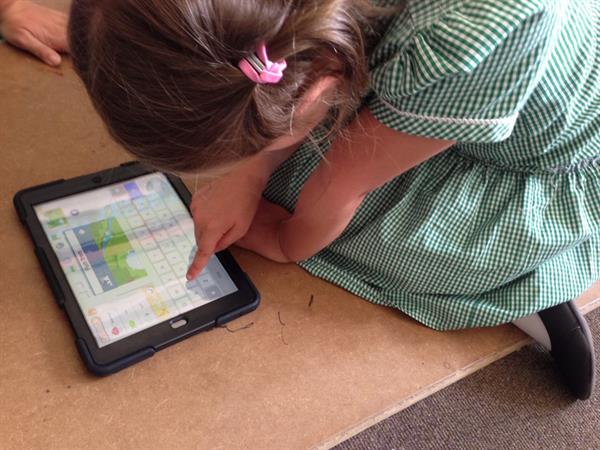What is tinkering?
We often try out something new to discover what it does and how it works: this is tinkering. It’s closely associated with logical reasoning. Pupils build up experiences of cause and effect: “If I move this, then this happens.” It’s a big part of independent learning, without teacher lead. For young children, it’s the vital play-based experimentation phase, full of questions and surprises. Ideas which seem wrong can be tried, just to see what happens.
For older individuals, tinkering is more-purposeful exploration and making, often through trial and improvement. It helps us to see our use of technology as being about developing our own understanding, rather than getting a ‘right’ answer; we may be able to do things in many ways. When using technology which we’ve tinkered with, we’re more likely to be open to novel and innovative solutions.

A young pupil tinkering with ScratchJr.
Why is tinkering important?
Freedom to explore in a risk-free environment engenders confidence and a have-a-go attitude. Open-ended questions and tasks encourage creativity, diverse ideas, the ability to look at things from many different angles. Computer programmers often first explore new technology to familiarise themselves with how it works and to get ideas about how it might be exploited. Software and hardware change at ever-increasing rates. Both users and creators need to be open to frequent and rapid developments. Being confident at tinkering helps view change as an opportunity rather than a danger, enabling us to keep our skills up to date and to harness new technologies. It also builds perseverance.
What does tinkering look like in the curriculum?
When introducing any new digital device, programming language or software environment, start by tinkering. For example, if using Scratch for the first time, pupils might play some existing Scratch games and then try some of the features of its programming environment. Challenge the children to try three new things or to make something unexpected happen. Their confidence to tinker will develop through these opportunities to explore technologies. Some children have little home access to digital devices and so might be hesitant at tinkering at school: they may need extra encouragement to learn how to tinker.





